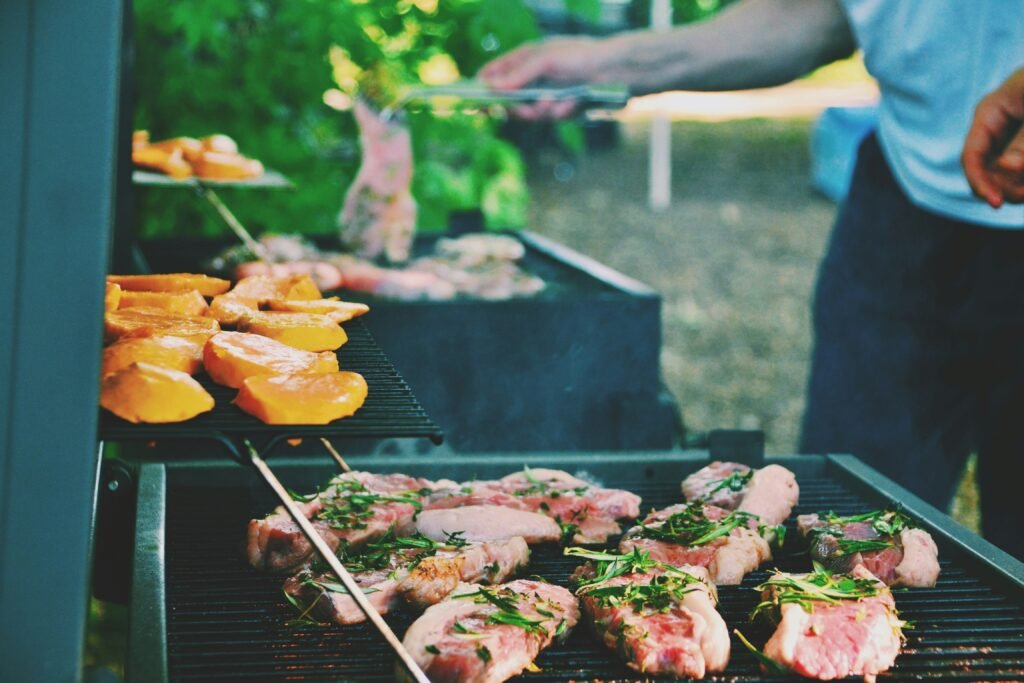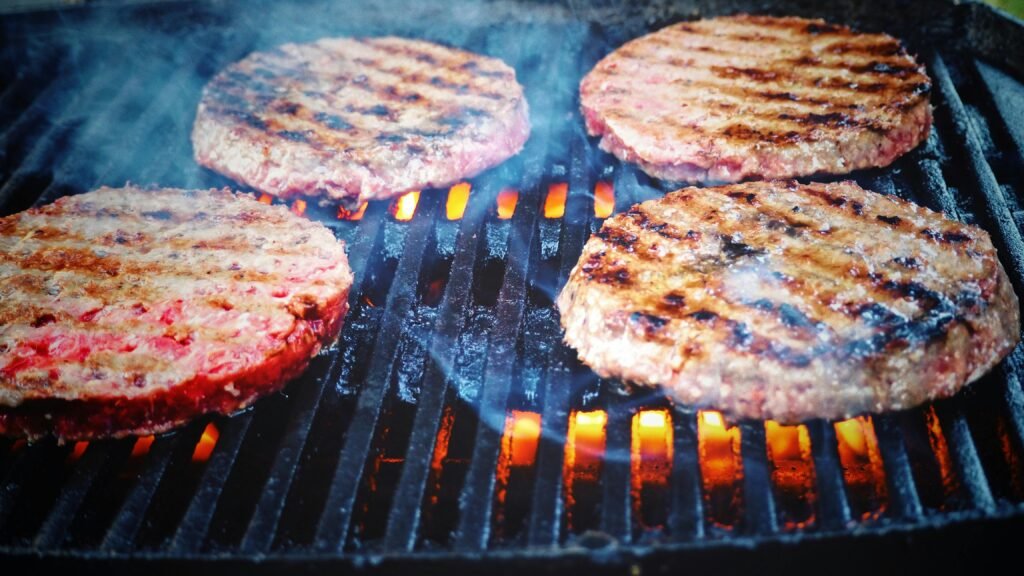Do you remember the first time we inhaled that smoky, savory aroma wafting from a barbecue pit? That mesmerizing scent has a way of drawing us in, evoking memories of laughter-filled gatherings, or perhaps it simply transports us to a place where good food and good company collide. The art of smoking food has been cherished across cultures for centuries, and today we’re going to unravel the mysteries behind it. Let’s take a flavorful journey through the world of smoking techniques and recipes, focusing on enhancing our culinary expertise.
Smoking: The Flavor Enhancer We All Need
Smoking is more than a cooking method; it’s a culinary art form that has been perfected over the years. The essence of smoking lies in imparting a distinct, robust flavor to food, a process that transforms a simple piece of meat or vegetable into a delightful masterpiece. But what is it about smoking that gives food such a unique taste? It’s all about the wood, the smoke, and the time we dedicate to this craft.
Understanding the Basics of Smoking
Before we can dive into the techniques and recipes, let’s talk about the foundational concepts. Traditionally, smoking involves cooking food slowly over indirect heat, using smoke from burning wood as a natural flavor enhancer. This slow cooking method serves two primary purposes: cooking the food thoroughly and infusing it with flavor.
There are two main types of smoking: cold smoking and hot smoking. While hot smoking cooks and flavors simultaneously, cold smoking is used primarily for adding flavor, preserving, and requires post-smoking cooking. Understanding these basics will guide us in choosing the best method for our culinary projects.
Table of Smoking Techniques
| Technique | Temperature | Use Case | Examples |
|---|---|---|---|
| Cold Smoking | 90°F (32°C) or below | Flavor & preservation | Cheese, nuts, fish |
| Hot Smoking | 225-250°F (107-121°C) | Cooking & flavor | Meat, poultry, vegetables |
Choosing the Right Equipment
Just like any culinary journey, our smoked food adventure begins with the right tools. While it’s easy to get lost in the myriad of smokers available in the market, we can simplify our decision based on our smoking needs and budget.
Types of Smokers
There’s something truly satisfying about choosing the perfect smoker. It’s much like finding that perfect cast iron skillet or the ideal rolling pin. Here, we break down the most common types of smokers, making it easier to find our new favorite toy.
-
Charcoal Smokers – Beloved for their ability to impart strong flavors, charcoal smokers are great for those who appreciate traditional methods. They require a little more attention and skill to maintain the right temperature but reward us with top-notch smoky flavors.
-
Electric Smokers – Convenience is the name of the game here. Electric smokers are perfect for those who prefer a more hands-off approach. Simply set the temperature, and let the smoker do the work. They may not provide as intense a smoke flavor as charcoal, but they’re incredibly user-friendly.
-
Gas Smokers – Offering a blend of convenience and flavor, gas smokers are a step up in temperature control from charcoal, yet still maintain a degree of flavor that electric smokers might lack.
-
Pellet Smokers – Think of these as the sophisticated cousin in the smoker family. Using compressed wood pellets, they offer ease of use with that authentic wood taste. Brilliant for someone who cherishes flavor but doesn’t want the labor of charcoal.
Tips for Choosing a Smoker
Choosing the right smoker can feel overwhelming, but it doesn’t have to be. By considering factors like space, budget, and commitment to the smoking art form, we can pinpoint what works best for us. For instance, if we’re apartment dwellers, perhaps a compact electric smoker might be our best bet. But if we’re after the ultimate experience, a robust charcoal smoker for the backyard might be calling our name.

This image is property of images.unsplash.com.
Wood: The Heart of Smoking Flavor
Now, let’s talk about wood. Like any great dish, a perfect smoked meal starts with choosing the right ingredients, and when it comes to smoking, wood is probably the most crucial component. It’s akin to selecting the right seasoning; it can enhance or overpower our dish.
Types of Wood and Their Flavors
Not all woods are created equal. Different types impart different flavors, and using the right one is essential for our desired outcome.
-
Hickory: Strong and hearty, it’s what we’d choose if we’re going for that bold, bacon-like flavor. Ideal for ribs, pork shoulders, and more robust meats.
-
Mesquite: The rock star of the grill, known for its intense and unmistakable flavor. Mesquite burns hot and fast, making it perfect for beef brisket and other red meats.
-
Applewood: If we’re looking for a sweet, fruity essence, this is our wood. It pairs beautifully with poultry, pork, and even gamey meats like lamb.
-
Cherry: Another sweet contender, cherry gives a mild flavor with a hint of fruitiness. It’s versatile and can complement anything from turkey to vegetables.
Quick Reference Wood Chart
| Wood Type | Flavor Profile | Best Used With |
|---|---|---|
| Hickory | Strong, bacon-like | Pork, ribs |
| Mesquite | Intense, earthy | Beef, brisket |
| Applewood | Sweet, fruity | Poultry, pork, game meat |
| Cherry | Mild, fruity | Turkey, vegetables |
Mastering Smoking Techniques
Having our equipment and wood ready, it’s time to hone our smoking techniques. The beauty of smoking lies in its versatility and the endless possibilities it presents. Whether it’s a dazzling dinner party or a cozy family weekend, smoking can be the main event.
Preparing the Food
Before we place our food in the smoker, a little preparation can go a long way. Marinating or seasoning will help the smoke cling onto the proteins, resulting in a richer taste.
-
Brining: Great for poultry and pork, a simple brine will help the meat retain moisture during the long smoking process. Usually comprised of water, salt, sugar, and other flavorful spices, brining is the secret weapon for juicy results.
-
Rubs: Dry rubs are another way to inject flavor. With a mix of spices, herbs, and seasonings, we can create profiles ranging from spicy and savory to sweet and tangy.
The Smoking Process
Once our food is prepped, it’s time to get smoking. We’re aiming for a low and steady temperature, the patience we exercise here is rewarded with deep, savory flavors.
Steps for a Successful Smoke
-
Preheat the Smoker: Much like preheating an oven, we must get our smoker to the desired temperature before placing our food inside.
-
Add Wood Chips: Depending on the smoker type, wood chips may need to be soaked before being placed in. This prevents them from catching fire and provides more controlled smoke.
-
Maintain the Temperature: Whether we’re adjusting vents on a charcoal smoker or turning a dial on an electric one, maintaining a consistent temperature is key.
-
The Waiting Game: Smoking requires time. Depending on what we’re cooking, this process can range from a few hours to an entire day.
Controlling Smoke
More smoke doesn’t necessarily equate to more flavor. In fact, over-smoking can give food a bitter taste. The ideal smoke is thin and blue, not thick and billowy—a little like catching a glimpse of a distant cloud in a clear sky.

This image is property of images.unsplash.com.
Tried-and-True Recipes
Finally, onto the main attraction—recipes. It’s here where meticulous preparation and patient smoking come together in harmony.
Smoked Brisket Recipe
Brisket is quite possibly the crowning achievement in the world of smoked meats. It takes time, patience, and a good deal of love to master, but when we hit that sweet spot, it’s magic on a plate.
Ingredients:
- 1 whole beef brisket
- 1 cup salt
- 1 cup brown sugar
- 2 tablespoons smoked paprika
- 1 tablespoon garlic powder
- 1 tablespoon onion powder
- 1 tablespoon black pepper
Instructions:
- Mix together all dry ingredients to form a rub.
- Generously coat the brisket with the rub. Let it sit overnight in the refrigerator.
- Preheat the smoker to 225°F (107°C). Use hickory or mesquite wood chips.
- Smoke the brisket until it reaches an internal temperature of 195°F (90°C). This may take 10-12 hours, but trust us, it’s worth every second.
Smoked Salmon Recipe
Smoked salmon is a delicacy, versatile enough to be served on a bagel with cream cheese or on its own with a side of capers.
Ingredients:
- 2 pounds salmon filet
- 1 cup brown sugar
- 1/2 cup salt
- 1 lemon, thinly sliced
- Fresh dill
Instructions:
- Mix sugar and salt. Cover the salmon evenly and refrigerate for 8 hours.
- Rinse and pat the salmon dry. Let it air dry in the fridge until a pellicle forms (2-3 hours).
- Preheat the smoker to 150°F (65°C). Best with alder or applewood.
- Smoke the salmon until it reaches an internal temperature of 145°F (63°C).
Final Thoughts
Smoking is not just about the end result, it’s about the journey. It’s a testament to dedication, flavor exploration, and the joy of sharing our creations with those we care about. Through understanding techniques, braving the patience required, and experimenting with different woods and flavors, we not only cook food but create memories. Happy smoking to us, may our endeavors be as rewarding as the first delicious bite.



